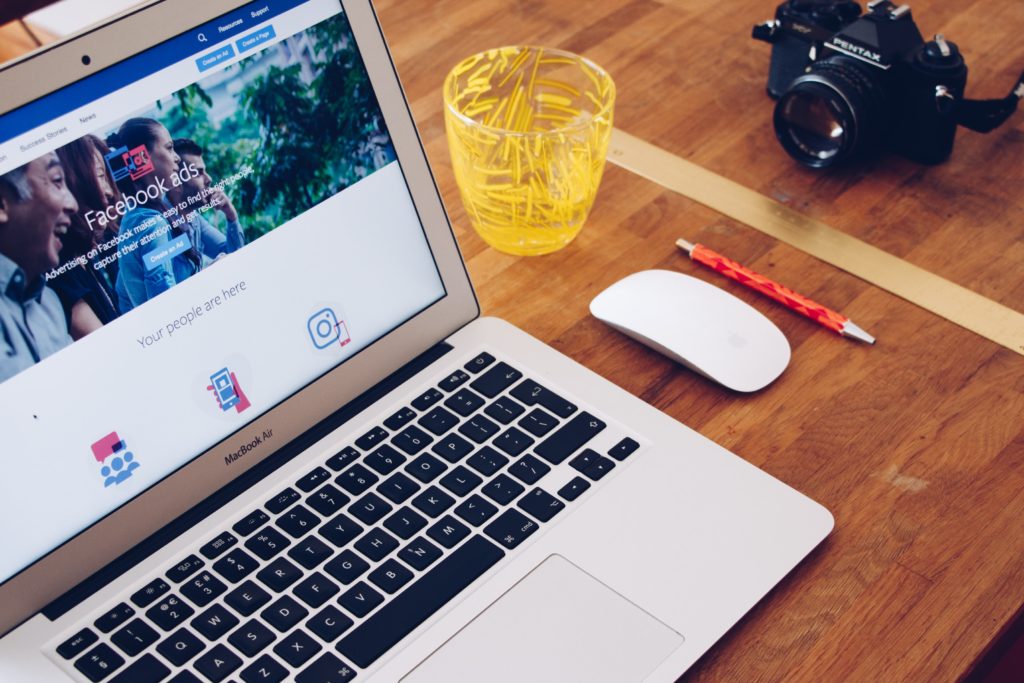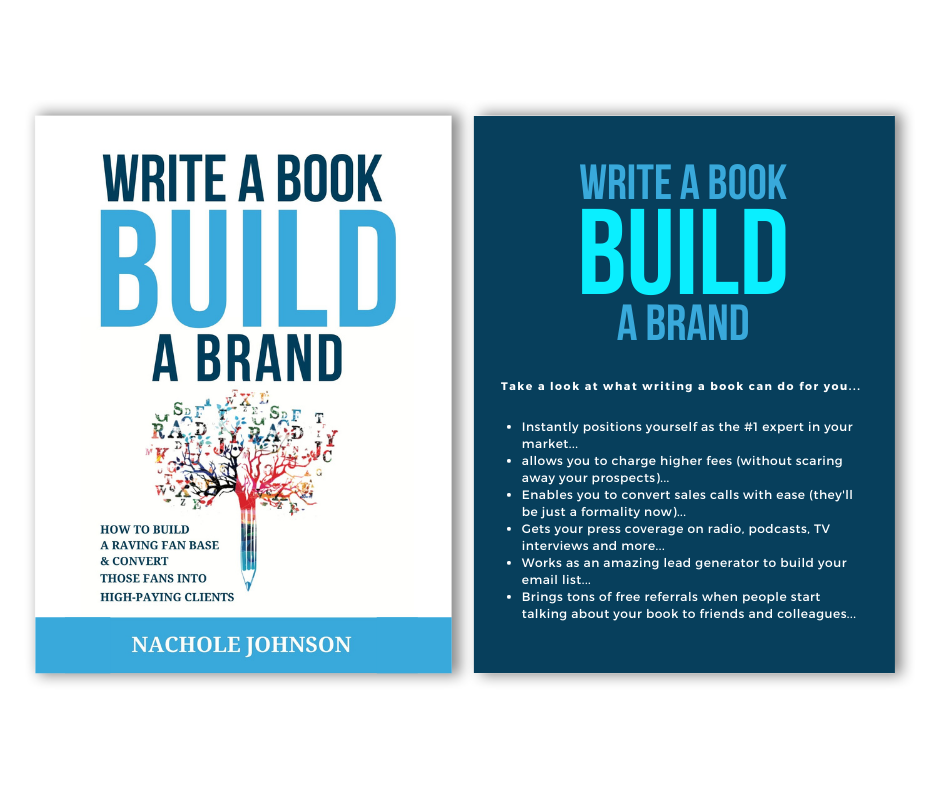
If you’re an author and have ever thought about advertising your book for more sales, but don’t know where to start this post is for you. As an author of over 30+ titles, I didn’t start paid advertising for my books until I wrote Write a Book, Build a Brand.
Running Facebook ads was a foreign concept to me since many of my books sell on their own due to them getting exposure through Amazon algorithms. But Write a Book, Build a Brand was different.
In Write a Book, Build a Brand, I wanted to test out a theory that I had long known was true, but I’d never approached with my books in the past. Building a brand through a book is completely possible, but it takes time when you publish (either traditionally or self-publish). I know this first-hand since my first business, ReNursing Edu was built on the books I had written.
It took about seven years to reap the full benefits of writing books to build my brand. When I wrote Write a Book, Build a Brand I wanted to accelerate this process for others who wanted to write a book to build their brand. The only way to do this is to run paid ads as opposed to organic traffic.
If you’ve never run paid ads for your book, it can sound scary, but bare with me.
The SLO Funnel Ad Method
Before I get into what type of ad works best for your book, I want to review the SLO funnel method. SLO stands for “Self-liquidating offer,” which means that the money spent on ads is covered by the sales of your product. For example, if your book is priced for $27 and you spend $27 per day on ads, you’d just need one sale to break even. Any other sales on top of that is profit for you.
This process is easier said than done coming from someone who was relatively new to Facebook ads before launching them for Write a Book, Build a Brand. I’m not going to lie, I struggled when first starting out, but I figured everything out and things are much easier if you keep things simple.
The Winning Facebook Ad Image
I did a lot of testing when I first started running ads – which you absolutely should do. But if you’re advertising a non-fiction book I’ll save you a lot of time just by reading this article. Many people want to have fancy ads with lots of colors and designs to catch someones eye while scrolling, but that’s not what has been proven best when advertising books.
Hands down the best ad for a nonfiction book is the image of the book! Astonishing, I know! Here’s the image of my best-performing ad:

Before I decided to solely use the image of my book cover, I tested about 7 different ad images ranging from videos to full product mockups. All of the data led back to using a simple image of my book cover.
The Winning Facebook Ad Copy
Alright, so you have your ad image for your book…what about the ad copy? Once again, keep it simple! Of course I tested different ad variations for my book, but it all came down to talking about what readers will learn in the book. According to most Facebook ad gurus, short copy is best, but that wasn’t true in my case.
Here’s a snapshot of my winning ad copy that you can use for your book ad:
“My name is Nachole Johnson and I wrote Write a Book, Build a Brand for all coaches, consultants, and course creators who want to create more stability in their business and brand through a book.
Write a Book, Build a Brand is a 135-page book that goes over my entire system of writing a book that turns readers into high-ticket clients.
❌ Without creating tons of content
❌ Without running webinars praying for a sell
❌ Without giving away information to “freebie” seekers who never buy
➡️ My book brings clients to me
➡️ I eliminated sales calls
➡️ Most of my business is automated
Here are a few things people learn from reading my book:
✅ How to write a book in 2 weeks – no writing experience necessary
✅ The secret behind writing a specific book to build a business and scale quickly
✅ How putting this one image on the cover decreases book sales
✅ The secret formula to ensure profitability when running ads
✅ The complete process of providing value to readers so they become repeat customers
✅ The little known trick to stop attracting freebie seekers
✅ The secret behind closing sales calls with ease (or eliminate them!)
✅ How to build a book funnel (And all the tech stuff behind it)
✅ How to identify the superpower that serves ideal clients
✅ How not being transparent squashes the chance of closing high-ticket deals
✅ The secret behind selling books with ads (And why it’s quicker to make a profit and build a brand instead of publishing on Amazon)
✅ How running webinars is a dated marketing method
✅ The Secret of “Giving It All Away”
✅ The little known formula to aim for when calculating AOV
✅ How to craft a Brand Script to attract ideal clients
✅ The process of creating supplemental products that ascend people into high-ticket offers
✅ Who to hire once the business is scaling (To work “on” the business instead of working “in” the business)
✅ How to optimize after the initial launch
✅ The little known secret to maximizing profit in business
✅ How developing SOPs helps businesses scale
✅ And much, much, more!
If you want to learn how to write a book to bring in more high-ticket clients, download Write a Book, Build a Brand today.
➡️ https://brand.studio8twentytwo.com/tc-ajs19-wbbb/”
Let’s break down the winning ad copy a little more in detail.
You may have noticed is that the words “you” or “you’re” aren’t used that often, in fact, the word “you” was used only once while “your” wasn’t used at all. There was a legit reason for this.
The use of the words “you” and “you’re” aren’t prohibited, but you will be penalized if you use them too much and your ad won’t be seen as often as an ad not overusing the words. The Facebook algorithm doesn’t favor ads with overusing these words simply because they won’t ads that are relevant, but not targeted.
When there is too much personalization with using “you” and “your” ads can come off creepy.
Another big thing that makes this ad copy work is the use of emojis. The use of emojis brings elements to the ad that catches someone’s eye while they’re scrolling. The main purpose of your ad is to get someone to stop, read, and click on your ad to get to your landing page.
Lastly, you’re selling a book…give potential readers a glimpse of what they’ll learn from your book when they buy it. There’s nothing fancy needed to sell a book. Keep it simple with your initial ad for your book.
Conclusion
The ad copy and image you use for your book doesn’t have to be complicated. Keep it simple with your first book ad. Using these tips will help your ad be more effective and less expensive when you launch your ads.
View comments
+ Leave a comment